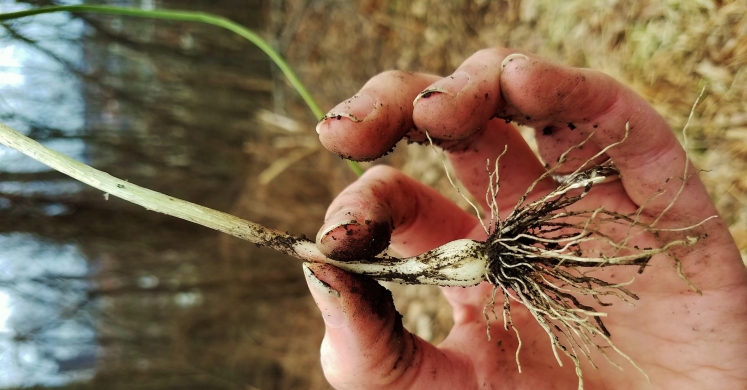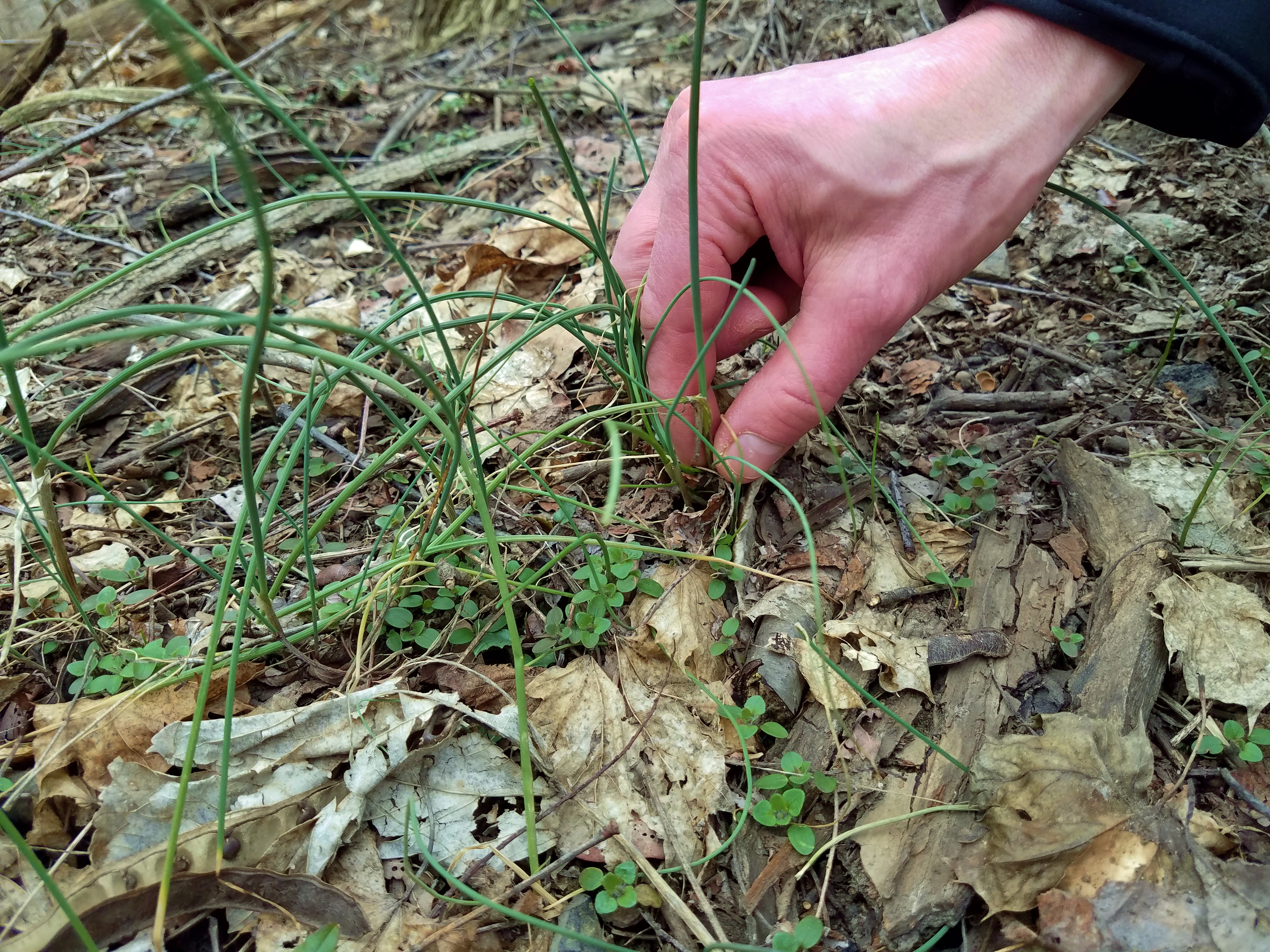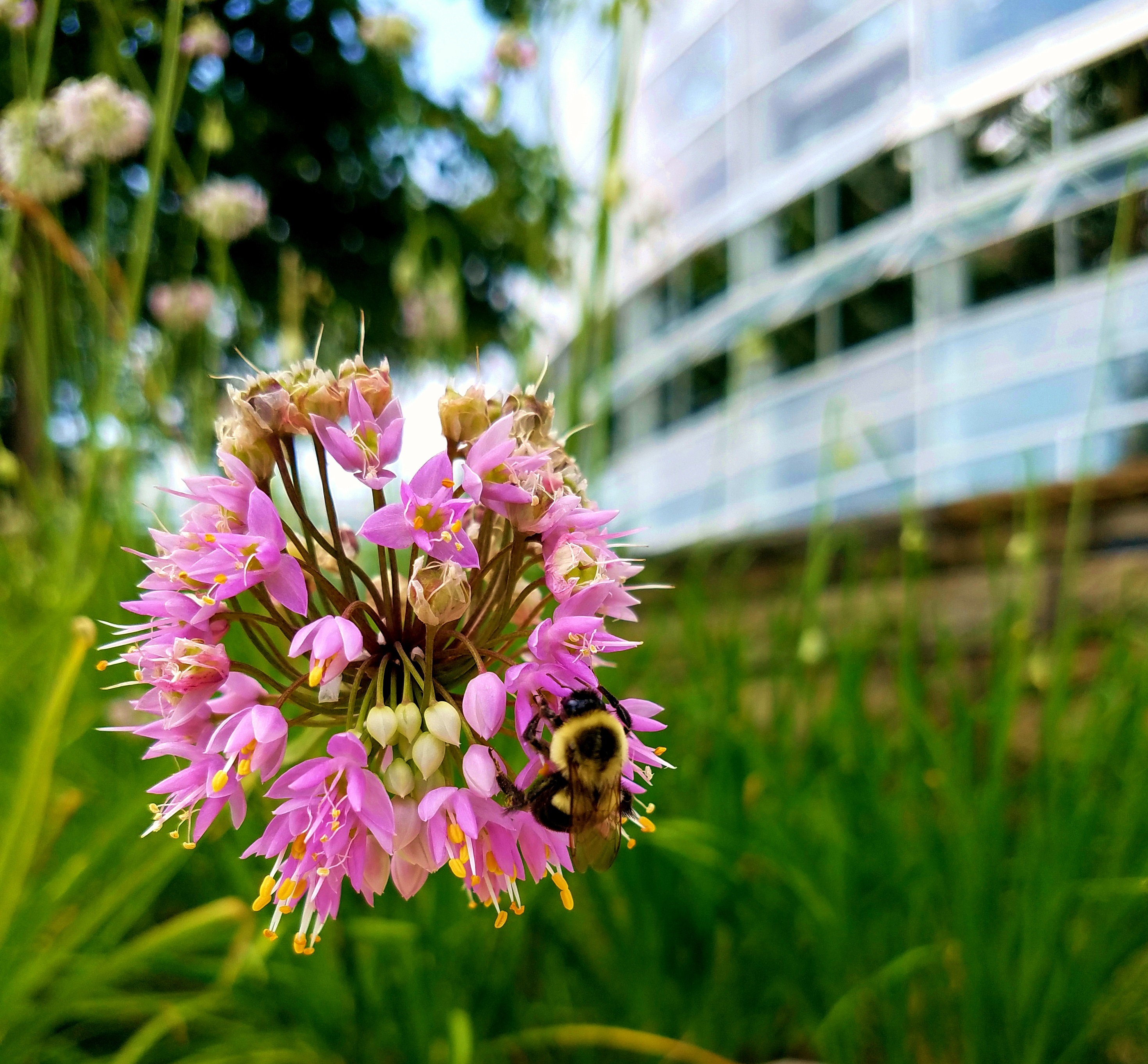Blog

#bioPGH Blog: Wild Onion or Garlic?
 A resource of Biophilia: Pittsburgh, #bioPGH is a weekly blog and social media series that aims to encourage both children and adults to reconnect with nature and enjoy what each of our distinctive seasons has to offer.
A resource of Biophilia: Pittsburgh, #bioPGH is a weekly blog and social media series that aims to encourage both children and adults to reconnect with nature and enjoy what each of our distinctive seasons has to offer.
On a walk through a wooded area this weekend, I noticed that the browns and grays of early spring were broken up by little streaks of green emerging from last year’s old dried leaves. Those little green streaks were the long, stretching leaves of a plant with a distinctive smell…the wild onion? Well, we thought it was a wild onion. When I did a little figurative digging, though, I realized that what I have colloquially called a “wild onion” leads to a confusing name game that includes a variety of closely-related plants and regional nomenclature.

The plant we found was a type of Allium, the genus that includes wild and cultivated onions, scallions, leeks, and garlic; and these are all within the larger lily family (Liliaceae). You are probably familiar with the delicious garlic that we sauté and add to spaghetti, Allium sativum; or the red onions that we add to a summer salad, Allium cepa. Outside of cultivation, though, Pennsylvania is home to a number of both native and introduced Allium plants, which brings us back to my research conundrum!
Based on the tube-like shape of the leaves, what we found seems to be Allium vineale commonly called crow garlic, wild garlic, wild scallions, or field garlic. It’s easily confused with the flat-leaved Allium canadense, which is commonly called wild onion, but can also be referred to as crow garlic, meadow garlic, and the Canada onion. To add to the confusion, the common names “wild onion” and “wild garlic” seem to be used regionally to describe different Allium plants. We haven’t even discussed wild leeks or ramps yet!
The wild garlic I found is a perennial (plants that continue to grow year after year, as opposed to an annual), and a rather persistent one. As a weed, it is difficult to remove because its underground bulb makes new little bulblets every year. If you try to remove the garlic just by pulling the foliage, you will likely leave the bulb behind; and even if you pull the main bulb, you may have missed a few little bulblets. This particular species is an introduced plant, most likely brought over from Asia during the eighteenth century, but like many of our native Allium species, the plant itself is still edible— if perhaps a bit strong in garlic flavor (pack mints!).
What I found fascinating about this search was that even though there are regional differences in the names and exact species, our native Allium plants have been cherished for generations by those who immigrated to North America within the last few centuries and by those who were here long before. Wild onions have been the stars of spring food celebrations among indigenous Americans, and they have been appreciated as traditional remedies. It’s an intriguing way to note how foods and plants can bring folks together.

Many Allium plants have beautiful, showy flowers, like this nodding onion (Allium cernuum) from last summer behind the Center for Sustainable Landscapes!
Connecting to the Outdoors Tip: If you happen to spy any wild garlic or wild onion (the early season to collect them for food lasts for another month or so until they begin flowering), just be sure that the plant smells like garlic. There are a few unscented look-alikes that could make someone sick after ingesting, but the smell is the major key. When in doubt, it's best not to taste.
Continue the Conversation: Share your nature discoveries with our community by posting to Twitter and Instagram with hashtag #bioPGH, and R.S.V.P. to attend our next Biophilia: Pittsburgh meeting.
Resources
Ohio State University: Wild Garlic
Penn State Extension: Wild Onion

